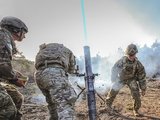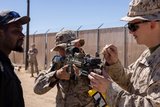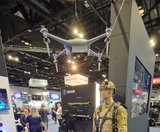NATO to conduct largest exercise since end of Cold War
During exercise Steadfast Defender 24 soldiers will rehearse how US troops could reinforce European allies in countries bordering Russia and the alliance’s eastern flank. (Photo: NATO)
NATO announced last week that it would be launching its largest exercise since the Cold War named Steadfast Defender 24 and involving 90,000 troops.
The exercise was set out to practice the deployment of US troops to support European allies in nations along the eastern flank of the alliance in the event of a potential conflict with a “near-peer” adversary like Russia. Around 90,000 troops will participate in the exercise which will take place from February to May 2024.
While the alliance refrained from explicitly naming Russia in its announcement, its foremost strategic document clearly designates Russia as the primary and direct threat to the security of NATO member states.
Related Articles
I/ITSEC 2023: Combined and joint exercises – when is bigger better?
A full year of continuing resolutions would be ‘devastating’ for defence plans, warns US senator
Ukraine receives further weapon support from NATO members and BAE Systems
Steadfast Defender has been designed to permit the 31-nation alliance to “demonstrate its ability to reinforce the Euro-Atlantic area via transatlantic movement of forces from North America”, US General Christopher Cavoli, supreme allied commander of NATO, said during the 18 January NATO Chiefs of Defence press conference.
The exercise will be launched in Norfolk, Virginia, with the deployment of forces to continental Europe. The activity will be comprised of a series of exercises that will continue throughout SACEUR’s Area of Responsibility throughout the first half of 2024, NATO noted.
Russia deputy foreign minister Alexander Grushko said the scale of the exercise marked an “irrevocable return” of the alliance to Cold War schemes. Russia invaded Ukraine in February 2022.
The last equivalent large-scale NATO exercises were REFORGER in 1988, with 125,000 participants, and Exercise Trident Juncture 2018, with 50,000 contributing military personnel.
More from Training
-
![Cubic tailors mortar simulator for the US Army]()
Cubic tailors mortar simulator for the US Army
The company’s mortar trainer received improvements based on soldier’s feedback.
-
![Saab expands footprint in the US]()
Saab expands footprint in the US
The company will operate in two new locations in the coming years to better support US services.
-
![How terrain management capabilities can improve military training]()
How terrain management capabilities can improve military training
This type of tool provides more realistic training easing the incorporation of new scenarios that accurately represent the threats of the battlefield.
-
![I/ITSEC 2024: Australian Army approaches second phase of countermining training]()
I/ITSEC 2024: Australian Army approaches second phase of countermining training
The Engineering Corps has been conducting individual instruction using FLAIM Systems’ Sweeper and should start collective deployments in 2025.
-
![I/ITSEC 2024: Zeiss introduces Velvet 4K SIM projector for night flight simulation]()
I/ITSEC 2024: Zeiss introduces Velvet 4K SIM projector for night flight simulation
The next-generation platform is motion-compatible and can be used in OTW and NVG applications.
-
![I/ITSEC 2024: Saab introduces UAV live training capability]()
I/ITSEC 2024: Saab introduces UAV live training capability
The system can be used to prepare soldiers for both drone offensive operations and CUAS missions.

























